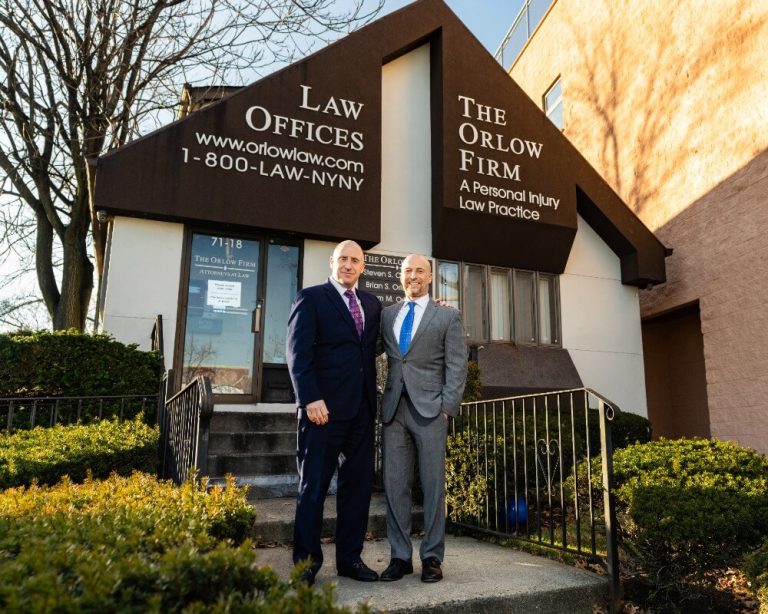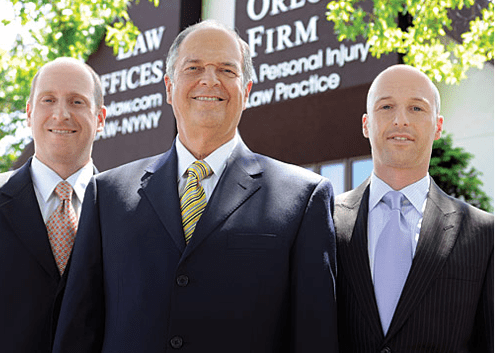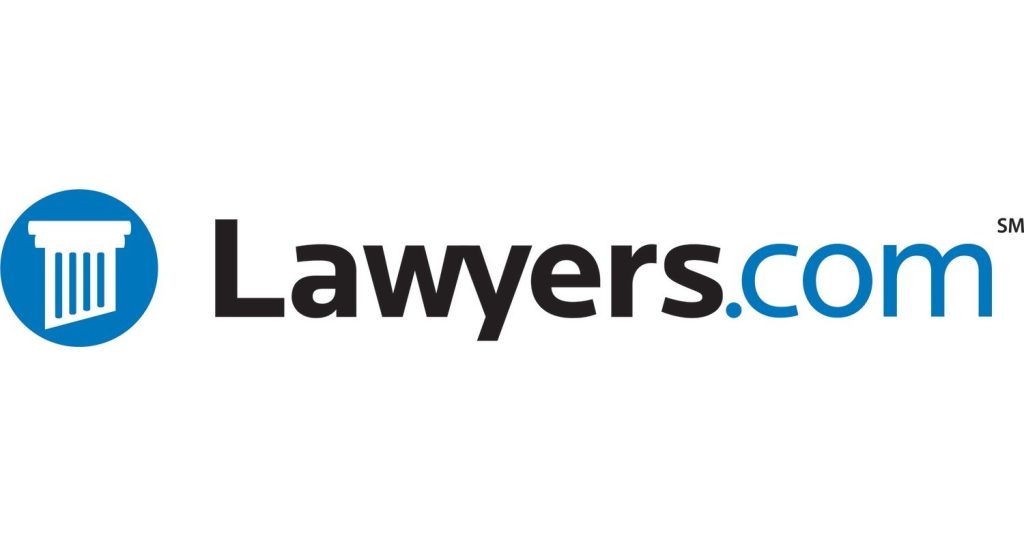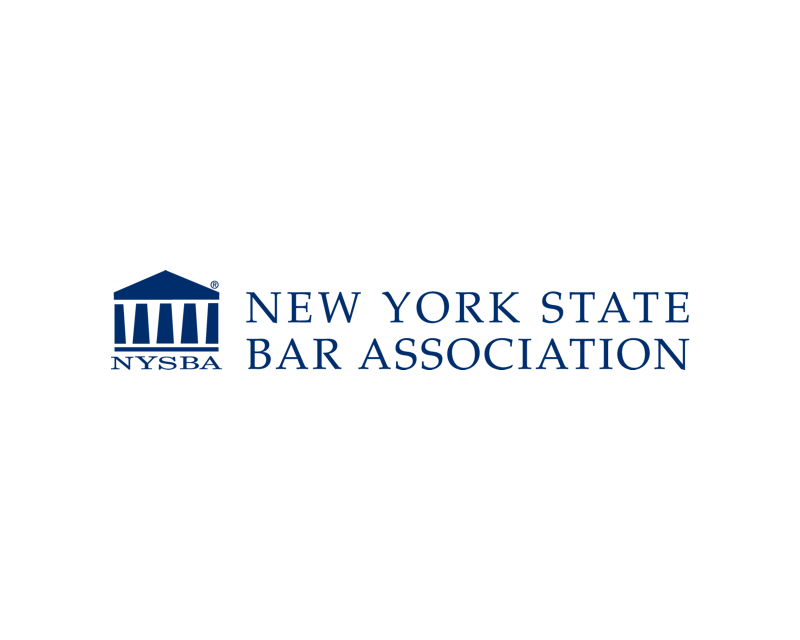The Following People Contributed to This Page
Cindy Cordova is a seasoned legal writer with over seven years of experience crafting clear, informative, and professional content for law firm websites. With a B.A. in English from Trinity Christian College, she combines her strong writing background with a deep understanding of legal topics to help firms connect with their clients through trustworthy and accessible content.
- June 10, 2025
What Does “Assumption of Risk” Mean in New York Personal Injury Cases?
Quick Answer: Assumption of risk means you accepted the known dangers of an activity. In New York, if this applies, it may limit or block your right to sue for injuries. If you have questions, you can reach The Orlow Firm at (646) 647-3398 for a free, confidential discussion of your situation.
“Assumption of Risk”: An Overview
In New York personal injury law, “assumption of risk” refers to a legal concept that can limit or block your right to sue if you got hurt while knowingly taking part in a risky activity. This means that if you understood the dangers involved and chose to go ahead anyway, the person or company you’re suing may argue that they shouldn’t be held responsible for your injuries.
This concept comes up most often in cases where someone is injured while doing something obviously dangerous — things like playing sports, visiting construction zones, or entering private property with warning signs. For example, if you attend a Yankees game and get hit by a foul ball, the team might argue you “assumed the risk” by attending a baseball game where flying balls are common, and so they should not be blamed for your injury.
However, just because assumption of risk is raised doesn’t mean your claim will automatically be denied. In New York City, courts look closely at the details of how the injury happened and whether the risk was truly understood and accepted. If the danger was hidden, or if the person responsible behaved in a careless or reckless way, they may still be held liable. For example, if a faulty ladder is used at a worksite and a worker falls, calling a NYC construction accident lawyer could help determine if the employer’s negligence overrides any claim of assumed risk.
In simple terms, assumption of risk is a defense that tries to show that the injured person knew what could go wrong and made their own choice to take that chance. But in many personal injury cases, especially in NYC, proving that someone fully accepted the risk is not always easy for the defense.
If you’ve been hurt in an accident and someone says you “assumed the risk,” it’s still possible to get compensation. Understanding your rights is key. The laws around this issue can be complex, and each case is different. If you have questions, you can reach The Orlow Firm at (646) 647-3398 for a free, confidential discussion of your situation.
How Can Assumption of Risk Impact Your Right to Sue in NYC?
In New York City, the legal concept of assumption of risk can limit your right to sue after an injury. This rule may apply if you knowingly choose to take part in an activity that has clear dangers. If the court finds that you accepted those risks, it could reduce or even block your chance to recover damages from someone else.
This doesn’t mean you can never sue, but the outcome of your case may be affected. Courts will look closely at whether you understood and accepted the risk before the accident happened.
Here’s how assumption of risk may impact your personal injury case in NYC:
- It could limit how much money you receive – If the court decides you accepted known risks, they might reduce your compensation. This is common in cases involving sports injuries or recreational activities like skiing or biking in public parks.
- It might prevent you from suing at all – In some situations, if you clearly knew the danger and still went ahead, you may not be able to bring a lawsuit. For example, if you sign a waiver or agreement before joining a risky activity, it may hurt your ability to sue later.
- You may still sue if the risk wasn’t clear or was increased by someone else – If the danger wasn’t obvious or was made worse by another person’s carelessness, assumption of risk may not apply. For example, if a sports facility didn’t properly maintain equipment, you could still have a valid claim.
In NYC courts, assumption of risk is not always simple. Judges and juries consider many factors, like your experience with the activity, whether signs or warnings were posted, and how much control you had over what happened.
Even if you accepted some risk, you may still recover damages if someone else acted in a reckless or negligent way. Courts often compare the actions of both parties to decide how much each one is responsible. This system is called comparative fault.
If you’ve been hurt in New York City and the other side claims you assumed the risk, it’s important to understand your rights. These cases can be complex, and having the right legal support can help protect your ability to seek fair compensation.
To discuss your options, call The Orlow Firm at (646) 647-3398 for a free, confidential consultation.
What Are the Different Types of Assumption of Risk in New York?
In New York personal injury cases, there are different types of assumption of risk. This legal idea can affect whether you can sue someone for your injuries. Simply put, it means that you accepted the risk of getting hurt when you did a certain activity. But not all assumption of risk is the same. New York law recognizes three main types:
- Express Assumption of Risk: This happens when a person clearly agrees to take on a known risk. It’s often written down in a waiver or signed form. For example, if you sign a waiver before going skydiving, you may be agreeing not to sue if you’re injured during the jump.
- Implied Primary Assumption of Risk: In these cases, the person joins in an activity where the risks are obvious and understood. This often applies to sports and recreation. For instance, someone playing in a basketball game in a NYC park understands they might get bumped or fall.
- Implied Secondary Assumption of Risk: This occurs when someone knows there’s a danger, chooses to face it anyway, and gets hurt. Unlike primary assumption, the danger isn’t built into the activity itself. For instance, if a worker sees a wet floor in a restaurant kitchen but walks over it anyway and slips, this may be considered secondary assumption of risk.
Each type can impact your right to receive compensation if you’re injured. However, courts look at many factors before deciding whether assumption of risk applies. Just because someone accepted some risk doesn’t always mean they gave up their legal rights completely.
In New York City, these situations often happen in places like gyms, playgrounds, sports leagues, and even everyday workplaces. If you were hurt and think someone else was careless, it’s still a good idea to speak to a personal injury attorney. You may still have a case even if you took on some risk.
When Does Assumption of Risk Not Apply in NYC Injury Lawsuits?
Assumption of risk does not always stop someone from suing for injuries in New York City. There are important limits to when this legal rule applies. Just because someone took part in a risky activity doesn’t mean others can act carelessly or dangerously without facing consequences.
Here are some key situations where assumption of risk may not apply:
- You didn’t fully understand the risks: If the danger wasn’t clearly explained or wasn’t obvious, you may not have legally assumed the risk. A person must know about the specific risk and accept it willingly for this defense to apply.
- The risk was hidden or unusual: If a risk is unexpected or more dangerous than what a normal person would expect, the assumption of risk may not apply. For example, if a sports facility had a broken railing no one warned you about, you may still have a case if you got hurt.
- The other party acted recklessly: In New York, even if you took on some risk, you may still sue if the other person acted with extreme carelessness or disregard for your safety. This is known as “gross negligence.”
- You were required to take part: If you had no real choice—like doing a dangerous task for work—courts may say you didn’t truly agree to take the risk. Voluntary choice is important in these cases.
- The law limits the defense: In some cases, the law does not allow people or businesses to avoid legal responsibility just by having someone sign a waiver. For example, landlords, employers, and schools cannot avoid all legal duties using assumption of risk.
Let’s look at a quick example. Imagine you’re attending a Yankees game. You know there’s a chance of foul balls. That’s a normal risk of sitting near the field. But if a stadium has broken netting and doesn’t fix it or warn people, and you get hurt, you might still be able to sue because the danger was beyond ordinary expectations.
Each case depends on the facts. In New York City, judges and juries look at how much risk you knew about, whether you accepted it, and whether someone else’s actions crossed the line into recklessness or neglect. Even if you signed a waiver or joined a risky activity, that doesn’t always block your legal rights.
If you’re unsure whether assumption of risk affects your ability to sue, it’s a good idea to speak with a personal injury lawyer. At The Orlow Firm, we can help you understand your options. For a free consultation, call (646) 647-3398.
How Do NYC Courts Decide If You Assumed the Risk?
In New York City personal injury cases, courts look at several key factors to decide if a person “assumed the risk” before getting injured. If the court believes you knowingly took on the risk of getting hurt, your ability to sue may be limited. But this isn’t always clear-cut. Each case depends on the facts.
Here are some of the main things NYC courts look at when deciding if assumption of risk applies:
- Did you know about the risk? The court will ask if you were aware of the specific danger before the incident. General knowledge isn’t enough. You must have known about the exact risk that led to your injury.
- Did you choose to take the risk anyway? Even if you knew about the danger, the court wants to know if you voluntarily accepted it. For example, did you agree to play a rough sport or walk into a clear hazard?
- Was the risk obvious and expected? Some risks are so common that anyone would understand them. For example, slipping on a freshly waxed gym floor may be seen as an obvious danger if there were warning signs posted.
- Was the risk part of the activity? Courts consider whether the danger is a regular part of what you were doing. For example, in some sports, getting hit by a ball is a normal risk of the game. But unexpected hazards that go beyond the usual risks, like broken equipment, might not count.
- Were you forced into the situation? If someone had no real choice, such as being told to take a shortcut through a dangerous area for work, the court may find that assumption of risk does not apply.
For example, if someone signs up to play in a public basketball game in the Bronx and twists their ankle during regular play, the court might say they assumed the risk. But if the injury happened because the basketball court was broken or poorly lit, that could be a different story. In that case, the city or property owner might still be held responsible.
Each case is different. Just because someone was aware of some danger doesn’t mean they gave up the right to legal action. Courts in New York try to be fair and look closely at the details before deciding if assumption of risk applies.
Can You Still Get Compensation If You Assumed Some Risk?
Yes, in many cases, you can still get compensation even if you assumed some risk. In New York, courts understand that people may take part in activities that have some dangers. That doesn’t mean they give up all legal rights if they get hurt. Whether or not you can get compensation depends on what kind of risk you took on and how the injury happened.
New York follows something called comparative negligence. This means more than one person can share the blame for an injury. Even if you are partly at fault—or knowingly took part in something risky—you may still recover money. However, your payment might be reduced based on your level of responsibility.
Here’s how it works:
- You knowingly took on some risk: For example, you go ice skating and know you might fall. If you slip on a clean, well-maintained rink, you likely won’t win a lawsuit.
- The other party was still careless: If the rink had a large hole and no warning signs, and you fell because of that, the owner could still be held partly responsible.
In this type of situation:
- The court looks at all the facts.
- They decide if you accepted the normal risks of the activity.
- They figure out whether someone else—like a property owner—was also careless.
If both you and the other person share the blame, a judge or jury assigns a percentage of fault to each side. For example, if you’re found to be 30% responsible and your damages total $100,000, you could still receive $70,000.
Keep in mind:
- Just because you knew something was risky doesn’t mean the other person is free from blame.
- Property owners, employers, or drivers still have a duty to act with care.
- You may still be able to hold them legally responsible for their share of the harm.
If you were injured in New York City and think you may have accepted some level of risk, don’t assume you can’t sue. These cases can be complex, and every situation is different. For clear advice based on your specific case, contact The Orlow Firm at (646) 647-3398 for a free consultation.
What Are Common Examples of Assumption of Risk in New York?
In New York, the idea of “assumption of risk” often comes up in personal injury cases. It means that if someone voluntarily chooses to take part in an activity they know could be dangerous, they may not be able to sue for injuries caused by that risk. NYC courts look at whether the person had knowledge of the danger and still decided to go ahead anyway.
Here are some common examples of assumption of risk in New York:
- Sports Injuries: If you join a basketball game at a NYC park and twist your ankle, you may have accepted the normal risks of contact sports. Getting hurt in the usual course of play—like slipping or colliding with another player—might not lead to a valid lawsuit.
- Amusement Parks and Rides: Riding a roller coaster at Coney Island involves some risk of sudden drops or jerky motions. If those risks are clearly known and expected, you may not be able to sue for injuries from that kind of movement.
- Recreational Activities: Activities like skiing in nearby resorts or ice-skating at Bryant Park can involve falls or bumps. If you understand and accept those risks, it may limit your ability to sue for related injuries.
- Dangerous Workplaces or Tasks: In some cases, workers who knowingly take on dangerous job duties—like using heavy equipment without safety gear—may be seen as assuming those risks. However, employers still have legal duties to keep workplaces safe.
- Injuries at Sporting Events: Spectators at games—like a Yankees or Mets game—might not be able to sue if they’re hit by a foul ball, since this is a known risk of attending a baseball game.
It’s important to know that not every injury falls under assumption of risk. For example, if poor maintenance or unsafe conditions added to the danger, you may still be able to take legal action. Also, assumption of risk does not apply if the injured person wasn’t fully aware of the danger or did not voluntarily agree to take it on.
If you or a loved one suffered an injury and you’re unsure whether assumption of risk applies, it’s helpful to speak to a personal injury lawyer. You can contact The Orlow Firm at (646) 647-3398 to discuss your case and learn about your options.
Why Is Legal Help Important in Assumption of Risk Cases?
Assumption of risk cases can be complex, especially under New York law. That’s why legal help is so important. If someone claims you “assumed the risk” of your injury, it can make it harder to sue and get compensation. But just because this defense is used doesn’t mean you automatically lose your case.
A skilled personal injury lawyer can help by:
- Explaining your rights – A lawyer can tell you if assumption of risk applies to your specific situation and what it means for your case.
- Challenging unfair claims – Sometimes, the person or company that caused the harm will wrongly say you knew the risk. Your lawyer can gather evidence to dispute this.
- Looking for exceptions – In New York, assumption of risk doesn’t apply to every case. Lawyers know when the law makes exceptions, like for things that were more dangerous than expected.
- Showing the other side was still negligent – Even if you knew some risks, you might still sue if the other party acted carelessly or failed to protect you.
- Negotiating with insurance companies – Insurance companies often try to deny or lower your claim using assumption of risk. A lawyer can handle these talks and fight for fair payment.
- Filing your case on time – New York has strict time limits for injury lawsuits. Legal help makes sure all paperwork is filed correctly and on time.
In New York City, assumption of risk can come up in many settings—like sports activities, construction sites, or even amusement parks. Each case is different. That’s why working with a lawyer is so important. They know the rules, local courts, and how to build a strong case even when assumption of risk is involved.
If you or a loved one was injured and someone says you “knew the risk,” don’t assume you can’t take legal action. Call The Orlow Firm at (646) 647-3398 for a free consultation. We’re here to help you understand your options and take the next steps.
Frequently Asked Questions About Assumption of Risk in NYC
- What does ‘assumption of risk’ mean? In simple terms, it means you knowingly accepted the chance of getting hurt. If you choose to take part in an activity that has clear risks—like playing sports or riding a rollercoaster—you may have “assumed the risk.”
- Can I still sue if I knew there was some risk? Possibly. Just because you accepted some risk doesn’t mean you gave up all your legal rights. If someone else’s carelessness (called negligence) made things worse or created extra danger, you might still have a case.
- What are some examples of assumption of risk in NYC? Common examples in New York City include injuries from:
- Attending a baseball game and getting hit by a foul ball
- Using a city skate park with obvious posted warnings
- Joining a boxing class where physical contact is expected
- What if I signed a waiver? A waiver can make it harder to sue, but not always impossible. NYC courts may still allow a lawsuit if the waiver was unclear or if serious negligence occurred. Each situation is different, so it’s best to have a lawyer review your case.
- Does assumption of risk apply to all kinds of personal injury cases? No. It usually applies to cases where dangers are obvious or expected. It does not excuse gross negligence or unsafe conditions in places like schools, jobs, or public spaces.
- Can children be assumed to understand and accept risks? Often, no. Courts are more protective of minors. In many cases, children are not seen as able to fully understand what risks they’re taking. This may allow them—or their parents—to still sue even if some risk was present.
- Will assumption of risk mean I get less money if I win? It could. New York follows a rule called “comparative negligence,” which means fault is shared. If the court decides you partly accepted risk, they may reduce your compensation by a certain percentage.
- How will the court decide if I assumed the risk? The court looks at several things, including:
- Whether the risk was clear and obvious
- If you knew about the risk ahead of time
- Whether you chose to go ahead anyway
- If someone else created added danger you didn’t expect
- Should I talk to a lawyer even if assumption of risk is involved? Yes. These cases can be tricky. Every detail matters, especially in New York City. A lawyer can look at your situation and help you understand your options.
If you have more questions about how assumption of risk may affect your case, contact The Orlow Firm at (646) 647-3398 for a free, confidential consultation. We’re here to help you understand your rights.
Contact The Orlow Firm for a Free Consultation on Your NYC Injury Case

If you were injured in New York City and someone claims you “assumed the risk,” you may feel confused about your rights. At The Orlow Firm, we help people understand how assumption of risk might affect their personal injury case. A free consultation can give you the clarity you need to move forward.
Even if you took part in a risky activity—like playing sports or attending a crowded event—it doesn’t always mean you gave up your right to sue. In many cases, assumption of risk is used by the other side to avoid taking responsibility. Our attorneys carefully review your situation to see if the defense applies, or if there are reasons it doesn’t.
During your free consultation, we can:
- Explain how assumption of risk works in New York personal injury law using plain language.
- Review the details of your accident to see if the defense might apply or can be challenged.
- Identify possible sources of compensation , even if you accepted some level of risk.
- Help you understand your rights and whether you still have a strong claim.
Assumption of risk cases can be tricky. For example, slipping on an icy sidewalk outside a store is different from getting hurt at a baseball game where you knew foul balls might fly into the stands. Each situation depends on the facts, and that’s why speaking with an attorney can help.
At The Orlow Firm, we’re committed to helping injured people in all five boroughs of New York City. Whether your injury happened in the Bronx, Brooklyn, Manhattan, Queens, or Staten Island, our team will listen to your story, explain your options, and help you take the next step.
Call The Orlow Firm today at (646) 647-3398 for a free, confidential consultation. There’s no pressure and no cost to speak with us about your case.
The Following People Contributed to This Page
Cindy Cordova is a seasoned legal writer with over seven years of experience crafting clear, informative, and professional content for law firm websites. With a B.A. in English from Trinity Christian College, she combines her strong writing background with a deep understanding of legal topics to help firms connect with their clients through trustworthy and accessible content.










